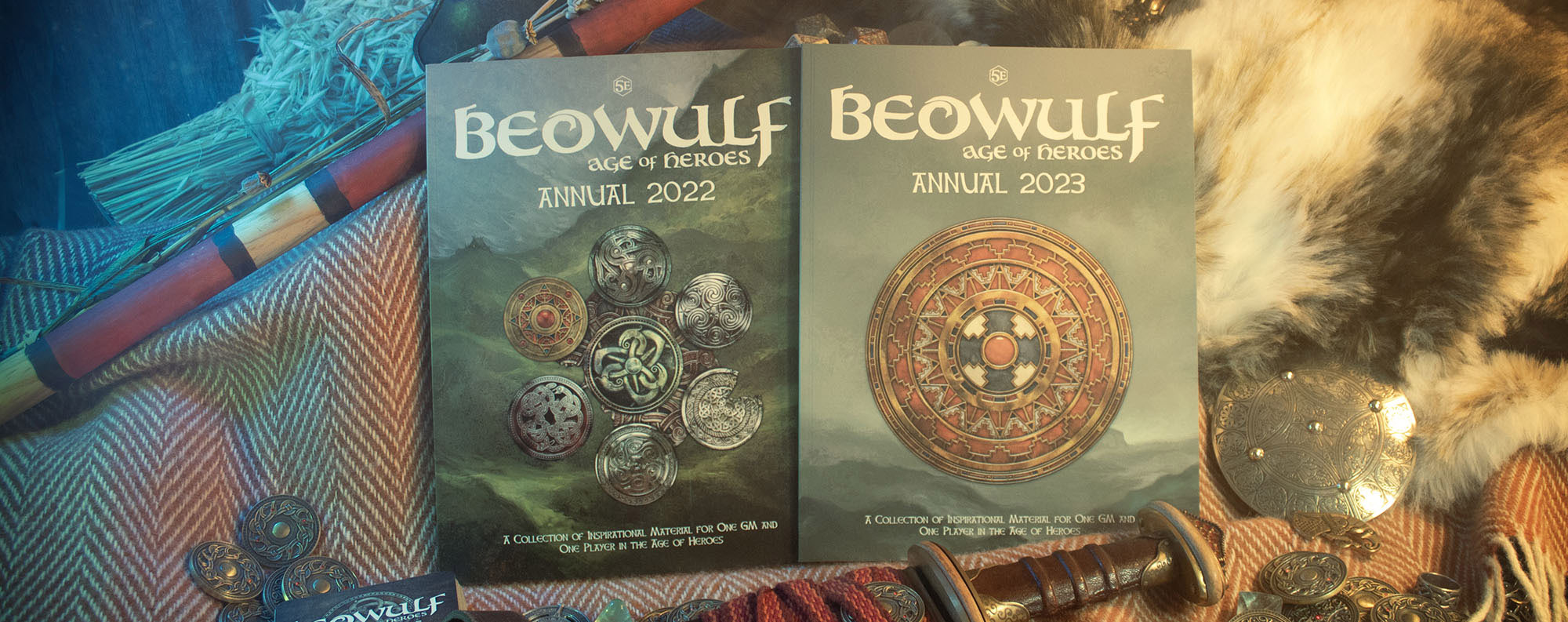
For The Silver Road setting book The Burn, I knew we would need something different.
The locations in the book are real – albeit seen through the eyes of memory and a kind of folkish magical realism.
The wee folk who you play seemed really the crux of the whole thing. And of course coming out of finishing up the Maskwitches Redux, models and sets were on my mind. But in this case the sets were life size – the real places along the Polmont Burn, just moments from my door, and coincidentally where the author Malcolm played as a child.
It seemed like a good idea to build some figures and I have wanted to do this for a while. The pre-made figures I used for Maskwitches have their advantages, but also many limitations.
I already had some armature wire on hand – it’s thick, but very flexible metal wire that bends easily but stays where you put it. It’s easy to cut, despite being several millimetres thick. I enjoy working with it.


I procured some brass tube to form the solid parts of a skeleton for my characters. I want the bendiness to be limited to their joints,ratehrt than their whole limbs being rubbery. Running the wire through the tubes, securing it with hot glue squirted into the tubes had the ring of possibility.

I cut the lengths of brass tube using a Dremel saw. I managed to get quite a lot of burns from hot brass sparks, but it was a learning process. I ground the resulting sharp edges down with a different Dremel tool – the likelihood of regretting not doing that later seemed high.


The wire passed through the tubes as planned, and was secured by pumping in hot glue. Brass does transmit heat quite effectively, so there were a few ouchy moments!
Everything seemed to work ok, and I then bulked out the basic form with more hot glue. Have I mentioned how much I love hot glue? Is there nothing it cannot do?

I’d acquired some creepy little shoes, which came in a creepy vac pack, and was keen to see how they worked out in conjunction with wire and hot glue feet. A victory!
“8 pairs of weird little shoes for sale. Never worn”
To add further bulk, but with less weight and more robustness I wrapped the basic form with wide strips of hessian. And clothes started to come together. Years ago I used to make all my own costume for LARP events, and I remember very basic patterns for various items of clothing. I didn’t want to sew anything for these figures because that’s very time consuming and I wasn’t yet sure this would even work. All the clothes were hot-glued along their seams. It worked. I was very happy and felt very lucky that this method seemed to produce convincing figures.


Next up: heads.
I started with a shaped ball of tinfoil. This bulks out the form of the head without being too heavy, and allows the polymer clay which is applied over the top to be nice and thin, which means it bakes in the oven quickly and evenly.
I remembered that I had a bag of little doll eyes bought for Maskwitches, so they were quickly added to the mix. I was worried they might melt when the clay went in the oven, but it was worth the risk.


While these aren’t anything like as well sculpted as some of my friends can achieve I was pleasantly surprised by how well the heads came together.


“HAY U GUYZ”
They both had plenty of character which was the most important thing. And worked “in the round” which was also important. Working with puppets/dolls/models like this means you can very quickly shoot from any angle, which is a massive advantage. Provided your sculpting works from all or at least most or some angles.
For hair I took some cuttings from my Maskwitches wigs. A strange feeling because I don’t really need to keep those wigs forever – they’ve served their purpose! But I only needed a small amount of hair for each of the Wee Folk. I decided to again go for the hot glue, and even though it’s a messy job I quite liked the vibe of it.

Next up was hands. Sculpting 4 individual hands which worked as non-articulated components was a worry, but what else was there to do but crack on? I built armatures and layered on clay. I think the hands are the weakest part, but they work ok.


I glued the hands in place, sacrificing some flexibility for sturdiness. I knew I’d be taking these puppets out in some fairly rugged locations, and their hands would be delicate. Any more delicate, such as they would need to be in order to be articulated or swappable? I don’t think they’d survive.
I used some rustic plaited and woven ribbons to cover the wrist joints and I like how that added something to these guys.
I finished them off with some delicate painting to the face, to add some colour and a bit of eyeliner. I also added some “breakdown” to their clothes with thinned paint, and some slate dust from the bottom of the backs of rocks I brought in for Maskwitches.

And we were done, ready for adventures along The Burn!








